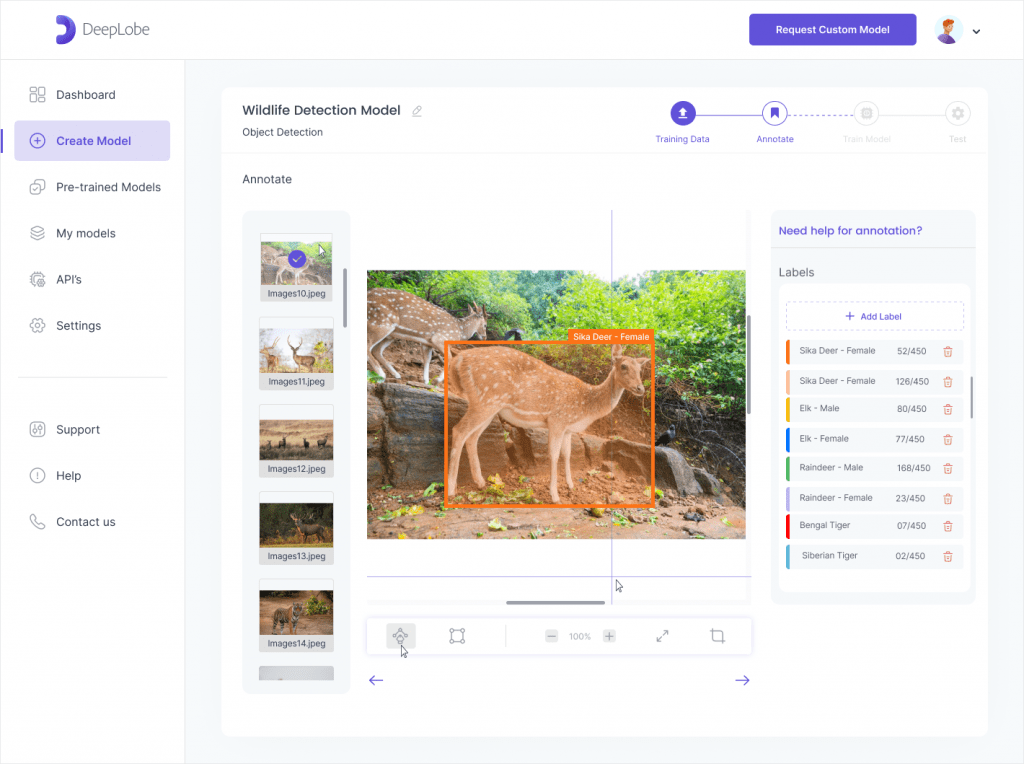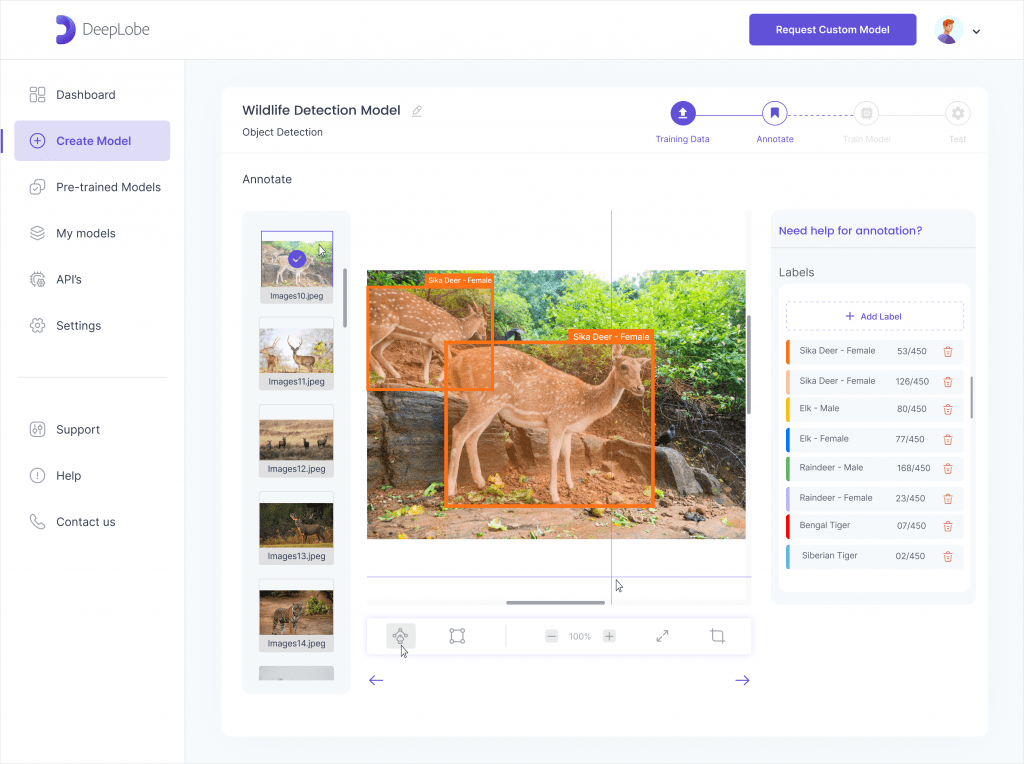
DeepLobeAugust 26, 2022Artificial Intelligence , Computer Vision
Data labeling is a process that involves adding target attributes to data and labeling them to train the machine and deep learning models. Data labeling is crucial in object detection to perform various computer vision tasks such as object segmentation, object counting, and object tracking.
The potential benefits of AI-enabled technology for automating the decision-making process have businesses eager to adopt it. By labeling data, businesses and industries can provide machines with a greater understanding of real-world conditions, leading to new opportunities. It is important to label data when performing machine learning tasks, as this helps with both input and output classification. Labeled datasets provide a way to teach machine learning models how to identify patterns in data, allowing for more accurate results. After training with labeled data, machine learning models can better recognize patterns in the new unlabeled data.
Labeling images for object detection
The first step in object detection is the labeling of the training dataset. This process can be very time consuming and can affect the accuracy of your model, if not properly labeled. Computer vision models are as good as the data that you provide them – where an essential part of providing good data is having good and suitable labels.
In this article, we have provided a few best practices on how to annotate images for object detection and create higher-performing models simply by creating higher-quality training data.
To start, let’s build a model that detects wild animals. For this problem, we will be labeling various animals with images of Deer, Tigers, etc. These images will be then labeled with bounding boxes so that the object detection model learns, understands, and predicts accurately. For this purpose, we will be following a few steps:
1. Determine and decide on good labels – which includes labeling one animal versus another. As our problem is to detect animals, we need to determine if we want to label the animals as Sika deer, Reindeer, Red deer or simply deers. It is, obviously, a good practice to create labels that are as specific as possible for the problem you are trying to solve. Therefore, we would like to give specific labels to our animals saying Sika deer, Elk, etc. Creating specific labels helps in not just combining different labels but also splitting them when required, without the need of re-labeling everything from scratch. Therefore, when we want to recognize a deer versus a tiger versus a monkey, they should be labeled precisely for the model to detect them accurately. This will help in merging multiple labels, let’s say, Tigers – which will merge all the tigers types ( Bengal tiger, Siberian tiger, Malayan tiger, etc), lions (Congo lion, South West African lion, Barbary lion, Asiatic lion, etc), or any other carnivore labels).

2. Bounding boxes – After creating specific labels, the next step is to create tight bounding boxes. A tight bounding box will exactly fit around the edges of the object to be recognized, without leaving a lot of space around it and also not omitting a part of the object of interest. This is because the computer vision models need to be as precise as possible and learn precisely what makes up an object without getting confused with the things in the background of the object.

3. Label all the objects – Ensure to label all the objects of interest. If we want our model to recognize a Chital or an Indian Muntjac from an image, we shouldn’t be labeling only a few deers, instead, we need to label all the animals appearing in the image. Doing this will help the model to differentiate and learn what a Chital or an Indian Muntjac looks like and what it doesn’t look like.

4. Occlusions – Occlusions happen when one object is in front of the other. The best practice is to label the occluded object that is visible in its entirety, resulting in overlapping bounding boxes.

5. Clear labeling instructions – Create clear labeling instructions to maintain reproducibility so that others can learn and understand it more clearly when shared with them.
6. Labeling tools – Always use good labeling tools. We provided an elaborative and comprehensive explanation of data labeling, its essential components, and the factors that need to be considered while choosing a data labeling tool/platform in our eBook. You can download it for free.
A large amount of labeled data is required to train and feed machine and deep learning models. This data is crucial for every AI project as it increases the efficiency of the system and helps businesses make better decisions. Transcend the data labeling challenges and maximize your overall data labeling experiences with DeepLobe – a no-code machine learning platform – to label any image and/or video for computer vision tasks, any text for natural language processing tasks, and any audio for speech recognition tasks. For more information, contact us.
